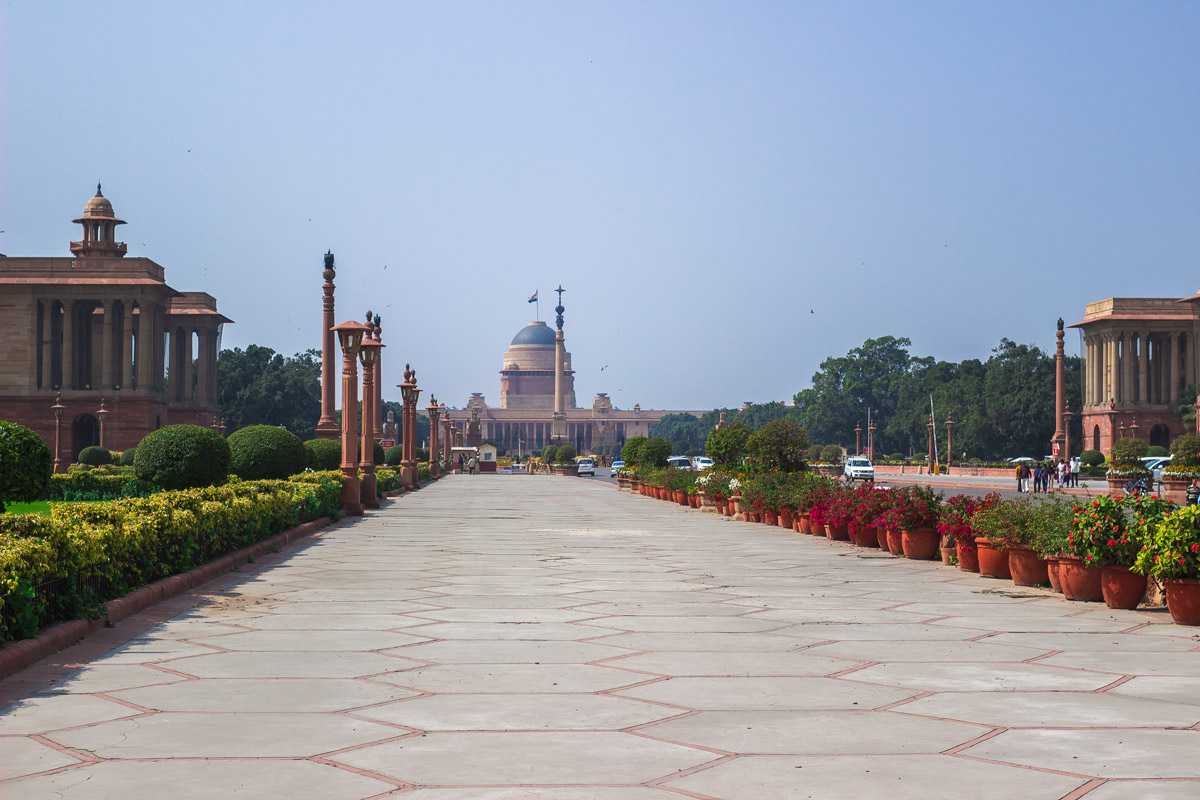Delhi. Part Three. New Delhi and attractions
Is there anything in Delhi besides Muslim slums? In the city center of Delhi, there is the New Delhi district. Like London, it’s essentially a city within a city. It has a structure that is unclear to us.
In the center of New Delhi, there is Connaught Place. It is a large circular square with a park in the center displaying the Indian flag, and surrounded by a ring of expensive shops.

This is the only place in the city with non-embarrassing architecture. It’s just that it’s cluttered with cars, making it impossible to take decent photos.

Everyone came to do some shopping.

Right on the sidewalk.

Of course, the cleanliness here is just for show. If you take a step back, you’ll see corners wrapped with barbed wire to stop people from pissing.

And this is what the backyards of expensive boutiques and shops look like.

The facades are pristine white, but behind them is a disgrace.

Such a sudden transition, just like that.

Public service advertisement against violence towards women.

Central Park.

Here, the residents of Delhi come to lie down on the grass.

To me, it’s just a scorched wasteland. But for Delhi, even this is good — a clean place for relaxation, at least.

The reader may recall the signs that say “No spitting” from the first part of the story about transportation. Here, you can find an expanded version of this sign with an explanation of why spitting is not allowed: it spreads tuberculosis.

Near Connaught Place is the administrative center of Delhi and all of India — the Central Secretariat. About a kilometer away, there are empty roads leading to it and lots of police officers.

A huge and meaningless square at the entrance. It resembles China or North Korea.

The territory is all neat and clean. The flowers are neatly arranged, and the sidewalks are paved with tiles.

One of the administration buildings.

Vintage Indian car.

A cop.

On the surrounding streets within a radius of several kilometers, it is surprisingly clean and empty. Affluent residents of Delhi live here.

Everyone is predominantly Mr. and Mrs.

Everyone has their own house with a large plot and a tall fence.


The sidewalks are clean, neat trees line the streets, bushes and lampposts stand alongside the cars. You can’t forbid living beautifully, even in India.

A little further away, there is a semi-elite neighborhood. Here, everything is equally clean, but multiple families live in one house.


Inner streets.


Not picturesque, but compared to the rest of the city, it looks quite decent.

Delhi’s landmarks are quite boring. They all follow the same style: brownish-sandy color, without any interesting shapes. Take, for example, Qutub Minar, the tallest brick minaret in the world.

Qutub Minar was built by Qutb ud-Din Aibak after the Muslim conquest of Delhi, inspired by Afghan architecture.

It’s actually beautiful if you take a closer look. However, the reddish column with Arabic inscriptions is an acquired taste in terms of appearance.

The last two tiers were built three hundred years later, so they are executed in a different style.

There is also an ancient mosque nearby.

And some local Athenes.

Another popular place is the Red Fort. For an ordinary person, it doesn’t differ much from Qutub Minar: it’s also red and made of brick.

It’s better not to go here. Every other Indian will want to take a photo with you, leaving no time for sightseeing.

The Gateway of India. Well, what is there to see? European cities are full of triumphal arches, but they are in the Empire style, lavish and intricate with many details. Here, it’s just a sandy passage in the middle of nowhere.

A bit more interesting is the Lotus Temple. It resembles the Sydney Opera House. Inside, there is nothing remarkable: rows of benches and complete silence. No one engages in meditation in the temple. It takes quite a long time to get here by metro, and there’s nothing much to do: you enter, sit in tranquility for five minutes, and then spend about an hour returning back.

Here is a beautiful sculpture called “Gandhi’s Salt March” hidden somewhere behind the Central Secretariat building. Surprisingly, this monument is not mentioned in every guidebook and is not marked on maps. However, this sculpture is depicted on the 500-rupee banknote.

It is also worth taking a look at the Jama Masjid Mosque. The mosque is remarkable in that you can climb the minaret and see the city from above.



